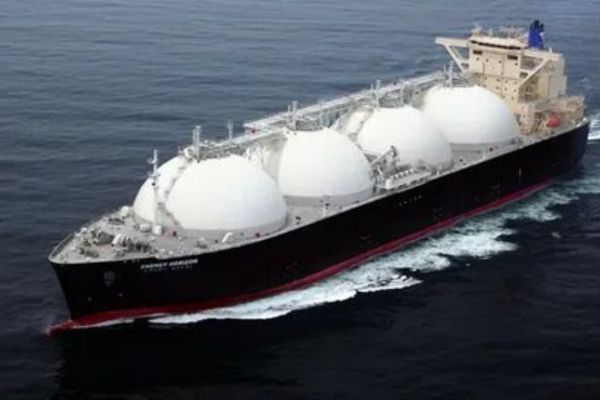The Liquefied Natural Gas (LNG) Market has become a critical component of the global energy infrastructure, offering cleaner-burning alternatives to coal and oil. As the world pivots toward sustainability, demand for LNG has surged due to its lower carbon footprint and ability to provide reliable energy across industrial, commercial, and residential sectors. Exporting nations now play a pivotal role in shaping global supply dynamics, pricing, and trade routes. This shift has intensified the global race among LNG-exporting giants to strengthen their market presence, diversify partnerships, and invest in advanced infrastructure.
In this blog, we spotlight the top LNG-exporting countries that are currently driving growth and influencing trends in the Liquefied Natural Gas (LNG) Market, while also analyzing the strategic importance of their export capabilities in a transforming global energy ecosystem.
Qatar: The Long-Reigning LNG Superpower
Qatar continues to dominate global LNG exports, holding one of the largest reserves in the world. With its North Field expansion project underway, the country aims to increase its LNG production capacity from 77 million metric tons per annum (MTPA) to 126 MTPA by 2027. This ambitious expansion reaffirms Qatar’s position as a market leader and highlights its commitment to meeting the growing global demand for cleaner energy.
What sets Qatar apart is its ability to maintain long-term contracts with Asian powerhouses such as China, Japan, and South Korea. Its state-owned energy firm, QatarEnergy, plays a central role in strategic export planning and infrastructure development. As noted in multiple industry reports, including insights from Fairfield Market Research, Qatar’s expanding capacity is expected to help stabilize global supply, especially in the face of geopolitical uncertainties elsewhere.
United States: The Fastest-Growing LNG Exporter
In recent years, the United States has rapidly emerged as one of the top exporters in the Liquefied Natural Gas (LNG) Market, thanks to its shale gas revolution. U.S. LNG exports hit record highs, primarily driven by terminals located along the Gulf Coast. Facilities such as Sabine Pass, Cameron, and Corpus Christi have ramped up production to serve European and Asian markets.
The geopolitical landscape, particularly the Russia-Ukraine conflict, has increased the demand for U.S. LNG across Europe, where countries are seeking alternatives to Russian pipeline gas. The United States also benefits from its pricing flexibility, as most of its LNG contracts are indexed to the Henry Hub, making them more attractive in volatile global markets. Furthermore, new projects like the Golden Pass LNG facility are poised to boost future exports even further.
Australia: Exporting Energy to Asia’s Doorstep
Australia is another powerhouse in LNG exports, with key projects like Gorgon, Wheatstone, and Ichthys helping the nation achieve global prominence. Its strategic proximity to high-demand Asian markets such as China, India, and Japan gives Australia a competitive advantage in shipping and delivery timelines.
Despite some challenges such as cost overruns, workforce constraints, and environmental concerns, Australia’s LNG sector remains robust. Its adherence to high safety and environmental standards also boosts its reputation in the global energy trade. According to analysts at Fairfield Market Research, Australia’s role in the Liquefied Natural Gas (LNG) Market is expected to remain steady, with continued emphasis on operational efficiency and export infrastructure improvements.
Russia: Energy Giant Amidst Geopolitical Tensions
Russia has historically been one of the largest natural gas suppliers to Europe, both through pipelines and LNG. Projects like Yamal LNG and Sakhalin-2 have enabled Russia to make significant inroads into the Asian LNG market. However, its role as a global LNG exporter has been severely impacted by geopolitical sanctions and supply chain restrictions due to the conflict in Ukraine.
Nevertheless, Russia is working to pivot its focus toward Asia, particularly China and India, to compensate for its reduced influence in Europe. Its Arctic LNG 2 project, although facing delays, aims to diversify export routes and develop year-round shipping capabilities via the Northern Sea Route.
Russia’s LNG future depends heavily on how it navigates geopolitical and economic pressures. If sanctions persist, the country may face long-term challenges in maintaining competitiveness in the global LNG arena.
Nigeria and Mozambique: Africa’s Rising LNG Exporters
Africa’s role in the Liquefied Natural Gas (LNG) Market is becoming increasingly significant, with Nigeria and Mozambique leading the charge. Nigeria, through its NLNG project in Bonny Island, has been an established LNG exporter for decades. It supplies energy to Europe, Latin America, and parts of Asia.
Mozambique, on the other hand, is a newer player but has vast untapped reserves. The development of the Coral South FLNG project and the Rovuma LNG facility positions Mozambique to become a major LNG exporter in the coming years. These projects are vital for the nation’s economic development and are also key to global supply diversification.
The emergence of African LNG suppliers offers opportunities for new trade relationships and helps offset regional dependencies in global LNG trade.
Canada: Potential Yet to Be Unlocked
While Canada is not yet a top LNG exporter, it holds tremendous potential due to its vast natural gas reserves and stable political environment. The country’s first major export terminal, LNG Canada in British Columbia, is expected to come online in the next few years. Once operational, it will allow Canada to ship LNG to Asia-Pacific markets more efficiently via the Pacific route.
Environmental regulations and indigenous rights have caused some delays, but once these challenges are navigated, Canada could emerge as a competitive LNG supplier, especially to energy-hungry Asian economies.
Strategic Significance of LNG Exporters in the Energy Transition
LNG exporters are central to the global energy transition. As coal consumption declines and renewable energy struggles with intermittency issues, LNG serves as a dependable bridge fuel. The strategic distribution of LNG export hubs helps balance global energy demand, offering flexible supply chains and diversified risk portfolios for importing nations.
Moreover, LNG enables energy-importing nations to reduce their reliance on a single supplier, thus enhancing energy security. For countries in Europe, the ability to source LNG from multiple exporters has been critical in the aftermath of geopolitical disruptions.
The innovation of floating LNG terminals (FLNG), improved liquefaction technologies, and investments in carbon-neutral LNG solutions are also contributing to a more sustainable and resilient LNG supply chain.
Exporters Will Shape the LNG Future
The Liquefied Natural Gas (LNG) Market is at a transformative stage, with exporting countries playing a decisive role in shaping its trajectory. From Qatar’s infrastructure expansion to the U.S.’s shale gas boom, and from Australia’s Asia-focused logistics to Africa’s emerging capabilities, the global LNG export landscape is becoming increasingly diverse.
With energy security, decarbonization, and economic growth at stake, the competition among these nations is likely to intensify. As new projects come online and existing facilities undergo modernization, stakeholders across the energy spectrum—from policymakers and investors to logistics providers—must keep a close watch on evolving exporter strategies.
For a deeper understanding of export trends and global LNG flows, recent analyses from Fairfield Market Research offer valuable insights into both current dynamics and long-term projections.
















